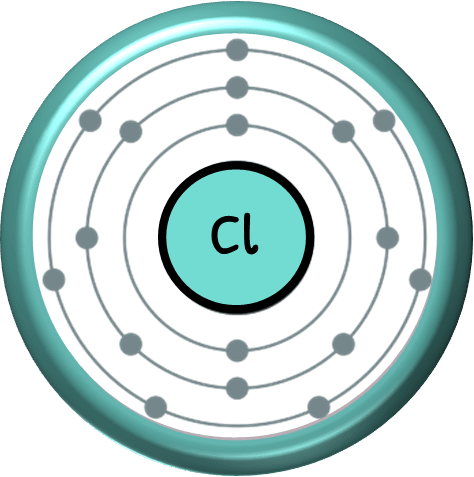
The Origin of Chlorine: Unveiling Nature’s Essential Element

Chlorine, a chemical element with the symbol Cl and atomic number 17, is widely recognized as a crucial component for various industrial applications, water purification, and even as a disinfectant. In its pure form, chlorine gas is a greenish-yellow color and has a pungent odor. But how did this element come into existence, and what is the source of its extraction? Let’s dive into the origins of chlorine and explore its journey to commercialization.
Chlorine is not found in nature as a pure element. Instead, it is primarily obtained from the mineral halite, commonly known as rock salt or sodium chloride (NaCl). Halite occurs in vast saline deposits throughout the world, which are remnants of ancient oceans or saltwater bodies that have evaporated over time. These deposits can be found underground or at the surface.
The process of extracting chlorine from halite involves a method called electrolysis. Electrolysis is a chemical process that aims to split a compound into its constituent parts using an electric current. In this case, when an electric current is passed through a brine solution (saltwater) containing halite, it breaks down into its components: chlorine gas bubbles out of the solution, while hydrogen gas and sodium hydroxide are produced as byproducts.
Mining for halite involves drilling or blasting the salt deposits to access the mineral-rich layers. Once extracted, the halite is then crushed into smaller pieces and transported for further processing. The mining process can have various impacts on the environment, depending on the techniques used and the mitigation measures in place. These impacts include habitat disruption, soil erosion, and potentially harmful effects on surrounding flora and fauna. After the extraction process, the chlorine gas undergoes further refinement and purification to ensure its quality and remove any impurities. This commercial processing involves liquefying the gas and subjecting it to further distillation. The purification process removes any remaining impurities or trace elements, resulting in chlorine that meets the desired purity standards.
The mining and commercial production of chlorine are not evenly distributed worldwide. The United States is the largest producer and consumer of chlorine globally. The country’s abundant natural resource reserves, including vast salt deposits in states like Louisiana, Texas, and Michigan, contribute significantly to its chlorine production dominance. Furthermore, the availability of advanced mining and chemical processing technologies in the US also plays a vital role in its commercial success.
However, the environmental impact of chlorine mining and processing can be substantial. The extraction and refining process can result in the release of pollutants into the air, water, and soil, potentially causing harm to ecosystems and human health. Proper management, regulation, and the implementation of eco-friendly practices are necessary to mitigate these impacts and safeguard the environment.
Moreover, the country’s high chlorine production demand can also place a strain on its immediate surroundings. The extraction of halite for chlorine production can lead to the depletion of natural reserves and disturb local ecosystems. It is crucial for mining operations to strike a balance between meeting industrial demand and adopting responsible mining practices to protect the environment for future generations.
Although the United States is the largest producer, several other countries play significant roles in chlorine production. China, India, Germany, and Japan are among the top chlorine-producing nations. These countries also have extensive industrial sectors that require large quantities of chlorine for a range of processes, such as plastics manufacturing, textile production, and water treatment.
In conclusion, chlorine, a vital element in various industrial applications, is not naturally occurring in its pure form but is primarily derived from halite deposits through a process called electrolysis. The mining and commercialization of chlorine have significant environmental implications that require careful consideration and responsible practices. Awareness of the environmental impact of chlorine mining and processing is crucial to ensure the sustainability of this essential element for generations to come.
This article is brought to you by Sybrina Durant, the author of the middle grade picture book, Magical Elements of the Periodic Table Presented Alphabetically By The Elemental Dragons. Learn More. In that book Chlorine is presented by the dragon, Krystix.
Inter-Active Elemental Fantasy-Themed Periodic Table from Magical Elements of the Periodic Table Presented Alphabetically by The Elemental Dragon Clan
Click here to use This Inter-Active Viewer To Learn More About The Elements Each Elemental Represents On This Periodic Table. Want this in a 24″ x 36″ Poster? Click here.
Sybrina Publishing Offers Fun Activities Based On The Book
Magical Elements of the Periodic Table Magical Elementals
Browse Magical Elemental Activities at MagicalPTElements or Sybrina-Publishing on TPT or Classful
Want To Hear The No Metal No Magic Song?












